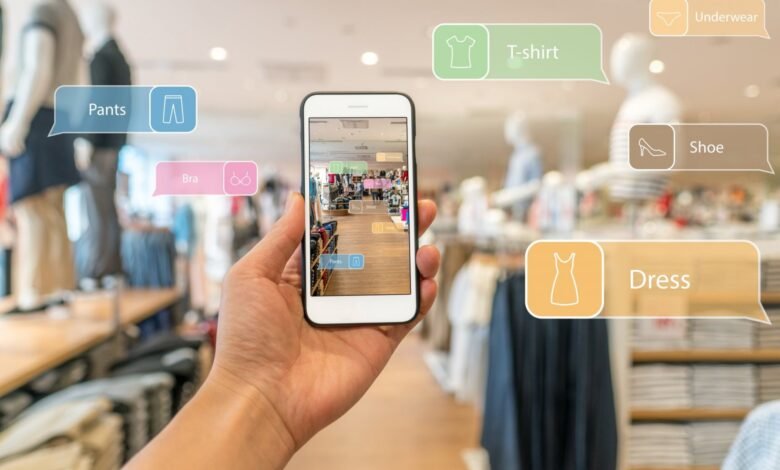How Augmented Reality is Shaping the Future of Retail

Augmented Reality (AR) is revolutionizing the retail industry, offering immersive experiences that bridge the gap between digital convenience and physical shopping. By overlaying digital information onto the real world, AR is transforming how customers interact with products, make purchasing decisions, and engage with brands. As retailers adopt AR to stay competitive, its impact on the future of retail is becoming increasingly apparent.
What is Augmented Reality?
Augmented Reality combines real-world environments with computer-generated elements such as images, sounds, or animations. Through devices like smartphones, tablets, and AR glasses, users can experience interactive, lifelike visualizations that enhance their perception of the world around them.
In retail, AR is being used to create personalized shopping experiences, assist customers in making informed decisions, and increase engagement with products.
See also: E-Waste Management: Addressing the Dark Side of Tech Growth
Key Applications of AR in Retail
1. Virtual Try-Ons
AR enables customers to virtually try on products like clothing, accessories, makeup, or eyewear without needing to visit a store physically. For example, apps like Sephora’s Virtual Artist allow users to test different makeup shades on their faces using their phone’s camera.
2. Interactive Product Previews
Retailers use AR to provide 3D previews of products. IKEA’s AR app, IKEA Place, allows customers to visualize how furniture will look and fit in their homes by placing 3D models of products into their real-world spaces.
3. Enhanced In-Store Experiences
AR enhances physical store visits by providing interactive displays and navigation tools. Customers can scan QR codes or use AR-enabled apps to access detailed product information, reviews, or promotions while browsing in-store.
4. Virtual Stores
With AR, brands can create fully immersive virtual stores where customers explore and shop in a 3D environment, bringing the retail experience directly to their homes.
5. Gamification and Engagement
AR makes shopping fun by incorporating gamified elements. Brands like Nike and Starbucks have used AR campaigns to boost customer engagement through interactive games and experiences tied to their products.
6. Personalized Recommendations
AR-powered tools use customer preferences and historical data to provide tailored product suggestions, making the shopping journey more efficient and enjoyable.
Benefits of AR in Retail
1. Improved Customer Experience
AR enhances the shopping journey by offering personalized and interactive experiences. Customers feel more confident in their purchases when they can virtually try products or visualize them in their intended settings.
2. Increased Sales and Conversion Rates
By helping customers make informed decisions, AR reduces the likelihood of returns and increases conversion rates. Virtual try-ons and previews allow buyers to assess products more effectively.
3. Competitive Advantage
AR sets forward-thinking retailers apart from their competitors. Early adopters of AR technology build stronger brand loyalty and attract tech-savvy consumers.
4. Reduced Costs
Virtual showrooms and AR-enabled tools reduce the need for large physical inventories and display spaces, cutting costs for retailers.
5. Data-Driven Insights
AR tools collect valuable data on customer preferences and behavior, enabling retailers to refine their strategies and improve offerings.
Challenges in Implementing AR in Retail
1. High Initial Costs
Developing AR applications and integrating them into retail systems require significant investment, which may deter smaller businesses.
2. Accessibility Issues
Not all customers have access to AR-compatible devices, potentially limiting the reach of AR-based solutions.
3. Technical Limitations
AR relies on accurate mapping and tracking technologies, which may not work seamlessly in all environments.
4. Privacy Concerns
Collecting customer data for personalized AR experiences raises privacy and security concerns. Retailers must ensure compliance with data protection regulations.
Future Trends in AR and Retail
1. Widespread Adoption of AR Glasses
AR glasses, such as Apple’s rumored AR headset, could make AR experiences more immersive and hands-free, further integrating AR into everyday shopping.
2. Integration with Artificial Intelligence (AI)
Combining AR with AI will enable even smarter personalization, predictive recommendations, and advanced visual recognition for enhanced shopping experiences.
3. AR-Powered Social Commerce
Social media platforms like Instagram and Snapchat are incorporating AR shopping tools, allowing users to try products directly within their apps and purchase them seamlessly.
4. Expansion of Virtual Stores
Virtual reality (VR) and AR stores will continue to grow, offering customers a fully immersive shopping experience from the comfort of their homes.
5. Eco-Friendly Retail Solutions
AR can help retailers promote sustainability by reducing the need for physical samples, printed catalogs, and inventory waste.
Conclusion
Augmented Reality is shaping the future of retail by delivering innovative solutions that enhance customer engagement, streamline decision-making, and boost sales. As AR technology becomes more accessible and integrated with AI, the retail experience will continue to evolve, offering consumers unprecedented levels of convenience and interaction. For retailers, embracing AR is no longer optional but essential to staying competitive in a rapidly changing market.




